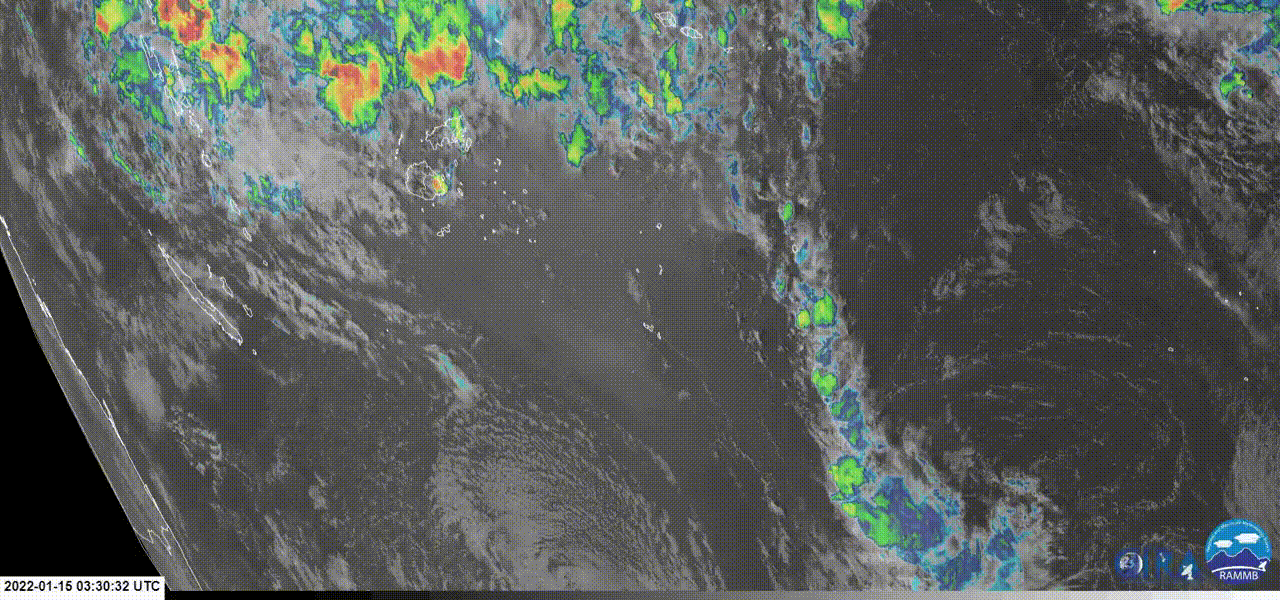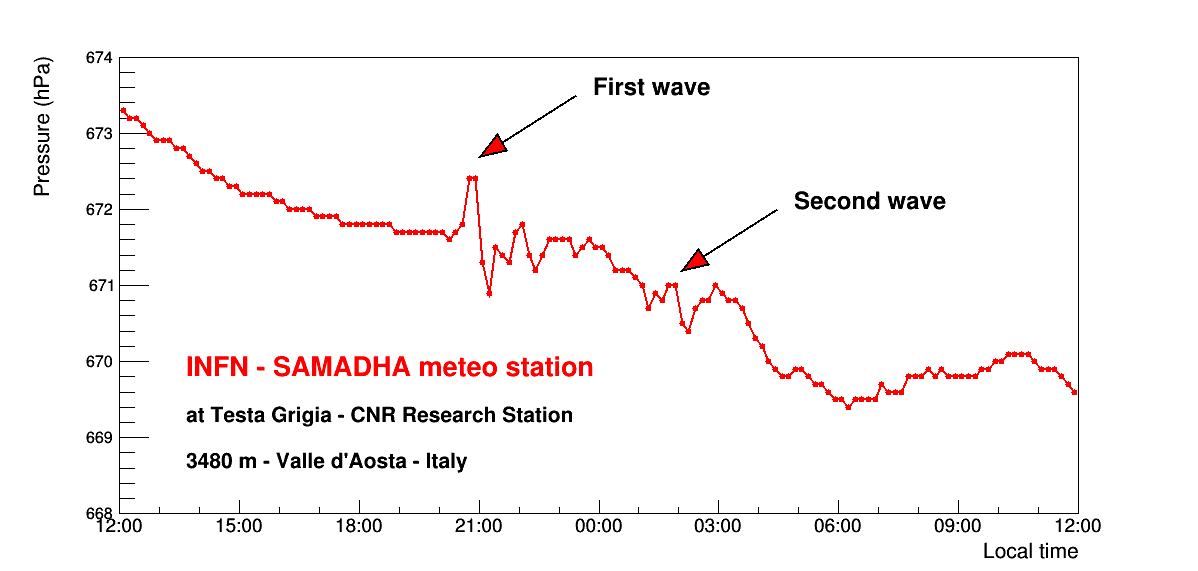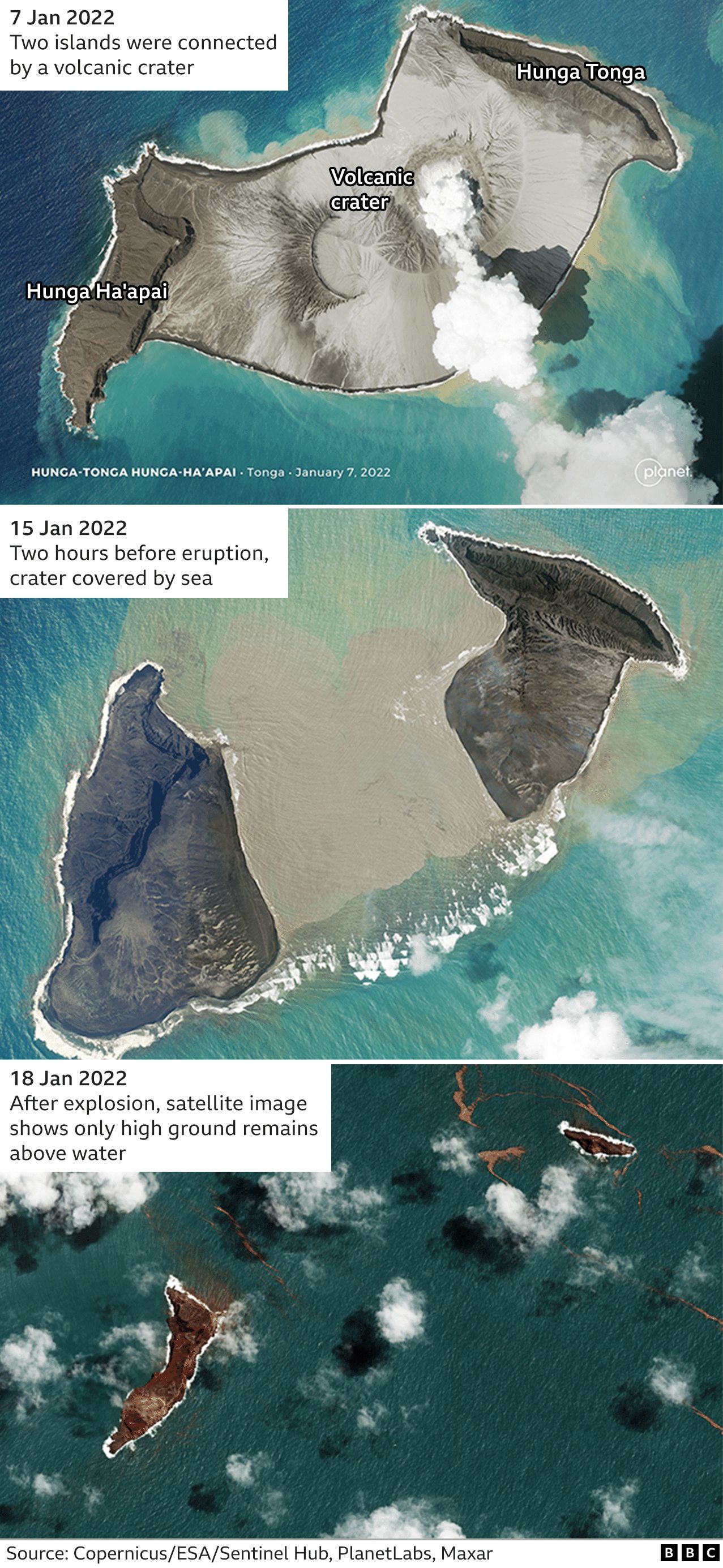On January 15 at 4:14 UTC the undersea volcano Hunga Tonga-Hunga Ha'apai in the Tonga islands in South Pacific made a violent eruption.
A huge plume of ash, gas and steam was spewed up to 20 kilometers into the atmosphere and tsunami waves were sent crashing across the Pacific.
The blast from the explosion was strong enough to be "heard" in all the world.

Satellite GEOS-17 animation

